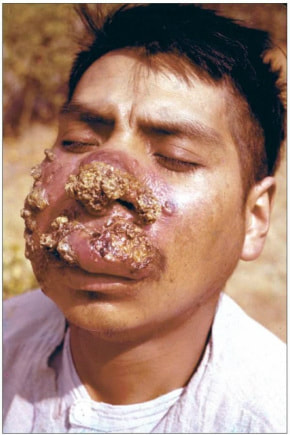 Leishmaniasis Leishmaniasis is caused by species of leishmaniasis. There are four species of leishmaniasis which include leishmania donovani, leishmania tropica, leishmania mexicana and leishmania braziliensis. There are two form of leishmania species the amastigote ( non flagellated ) or promastigote ( flagellated form).Serology test is useful to detect leishmaniasis. Leishmanin skin test will be positive after recovery while negative during the active phase of the disease. Biopsies are taken from the skin, spleen, lymph node and bone marrow. Leishmaniasis is transmitted through a vector which is the sandfly. There are few forms of leishmaniasis. These include kala azar or visceral leishmaniasis, cutaneous leishmaniasis and muco cutaneous leishmaniasis. Visceral leishmaniasis/ kala azar is caused by leishmania donovani. Leishmania donovani will invade the macrophages. Patient may present with gradual onset of chills, fever, anemia and splenomegaly as well as hepatomegaly and leukopenia. Kala azar may lead to death. Leishmania tropica and leishmania mexicana may cause cutaneous leishmaniasis. Cutaneous leishmaniasis may present with chiclero ulcers or oriental ulcers. Patient may present with ulceration and papules at the site of infection. Muco cutaneous leishmaniasis may affect the soft tissue of the palate and nose. Mucocutaneous leishmaniasis is caused by leishmania braziliensis. Leishmaniasis is prevented with prevention of bites from sandfly by using insect repellant or treating the patient with pentavalent antimonials ( sodium stibogluconate).
0 Comments
Leave a Reply. |
Kembara's Health SolutionsDiscovering the world of health and medicine. Archives
June 2023
Categories
All
|

 RSS Feed
RSS Feed